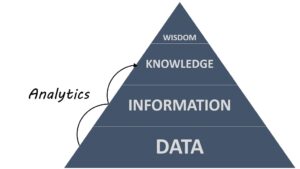Entrepreneurs history in ancient age – Digitalization Age
Digitalisation age
Entrepreneur has experienced both the 2008 financial crisis and the late-90s dot-com bubble. And long before our time, they had the Industrial Revolution and the Great Depression.
2020 brief overview
Since 2020, the business landscape has irreversibly changed, and we must be aware of these changes, foresee how they will influence us, and promptly adjust if we are to continue to be successful. Most entrepreneurs suffered a massive shakeup when lockdowns entirely transformed the workplace. Some businesses adapted smoothly, while others had a more difficult time. The silver lining was that most eventually figured it all out, demonstrating to the entire world that a remote workforce is viable.
Many entrepreneurs have digitalized their services from brick-and-mortar retail stores to survive amid this pandemic – all virtually overnight. It’s no longer optional to have an online store. Digitalization is the application of digital technologies to alter a business model and provide new revenue and value-producing opportunities.
Transformation of Information age
As the transition to e-commerce, consumers are no longer satisfied with only physical products but with on-going positive experiences engagement by businesses. We’ve become more hands-off as a result of the Internet. People are merely addresses and credit card approvals, and names don’t have faces. It is no longer enough for businesses to rely on a product to engage customers in the Age of Experience. Opportunities for customer participation and touchpoints have increased as a result of delivering experiences rather than products. Tesla, for example, has disrupted the traditional automobile dealership paradigm by establishing its own storefronts. These stores are designed and built by Tesla and staffed by Tesla employees, enhancing Tesla’s capacity to provide a customer experience that extends far beyond the physical vehicle.
Furthermore, companies are turning to big data analytics to identify hidden patterns, correlations, and insights in order to make better business decisions. It entails analyzing vast amounts of data to fit client expectations, potentially lowering consumer research time, and resulting in targeted and personalized campaigns for corporate efficiency. You can improve your products and services by better understanding them. It enables you to provide the best degree of customer satisfaction possible. This can also help to increase client loyalty and improve customer service.
Amazon
Amazon – world’s largest e-commerce company, founded by entrepreneur Jeff Bezos, is one great example. They capture consumer behaviour, such as repetitive price checking on a same product, so they may adjust their prices to beat out competitors and determine whether or not this is a common product. In reality, these data account for 35% of Amazon’s revenue, allowing the company to understand what each consumer wants and enjoys so that it may offer the same or comparable products to them when they return to the store.
Grab
Grab is another excellent example, initially a transportation-related student college project. They operate in cities all around Southeast Asia. Grab teams pull raw data from their data warehouse to enable a deeper understanding of the user experience and discover product enhancement opportunities. Tracking travel patterns and different metrics leads to new product idea, like GrabShare. These insights also assist Grab in identifying opportunities and problems in different markets, as well as making feature recommendations, in order to improve the user experience. They discovered, for example, the chat feature helps prevent cancellations.
These organizations, like all global ventures, adopted the new approach to excel in today’s world to enhance customer relationships, addressing problem and spot trends in product research and development.
Key takeaway
Sure, not every trend is worth following, but big data is no longer just a trend. This is a proven method that works if you truly want to understand your clientele and transition your business to the next level. There’s no denying that technology, and the rate at which it evolves, has had a big impact on how we conduct business today. It necessitates a new way of thinking about the customer experience as a business priority.
Unless something goes wrong, online merchants rarely contact with their customers. Knowing your audience — what they need, desire, and possibly even don’t know what they want — is one of the most effective method to learn how to run a successful business because, well, you don’t have a business to run if you don’t have a customer base. It’s not the people who occasionally stop by your store who keep the doors open; it’s the ones who come in every time they are looking for that similar product or service that are doing the most to support the company. “Quality is more important than quantity. One home run is much better than two doubles.” – Steve Jobs.
Now that the Internet is widely accessible, we have the ability to work from virtually anywhere. Consumers can live on the opposite side of the globe, and business partners can live in different cities which mean that more and more companies are learning how to run a successful business virtually.
So how do you run a successful business in this fast-paced world that seems to change on a dime?






